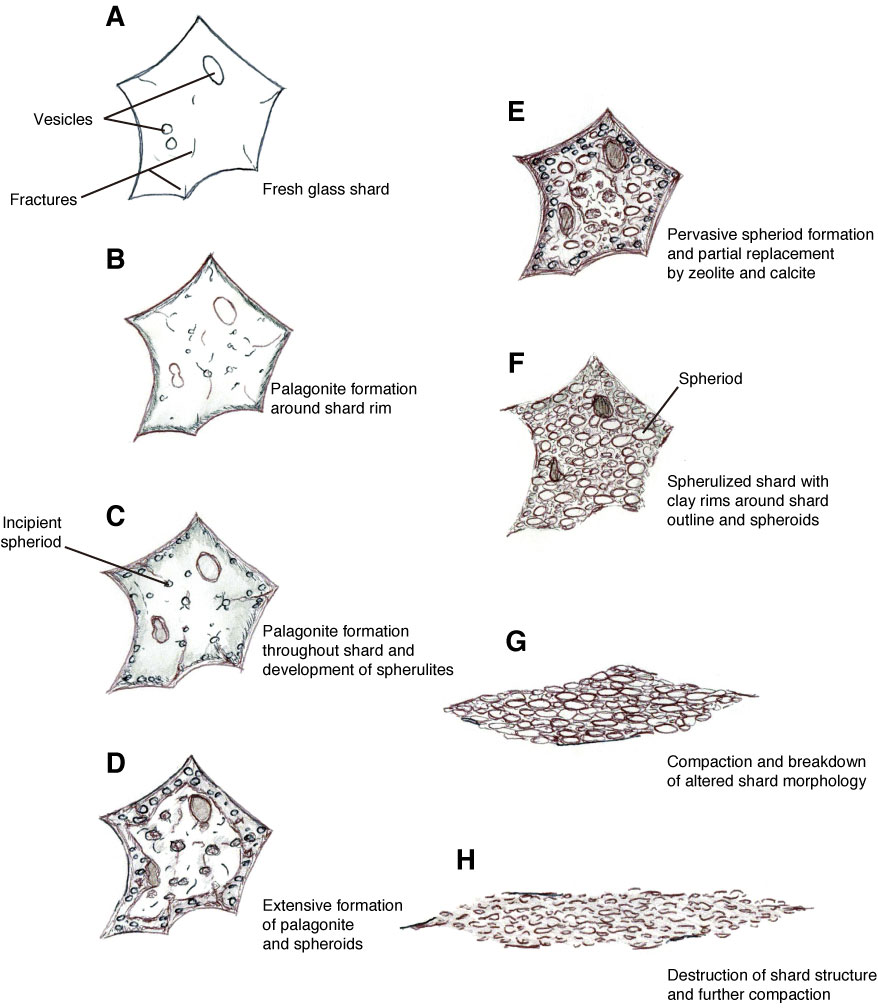
Figure F31. Scheme for physical-chemical alteration of volcanic glass shards, Hole U1348A. A. Original glass shard with minor vesiculation and incipient fractures. B. Edges of the original shard become replaced, initially through a devitrification process caused by palagonitization. C. Palagonitization progresses further inward, replacing the greater proportion of the primary glass composition and spheroids begin to develop. D. Clay-rich boundaries form around the palagonitized shard, and spheroids increase in both size and frequency. E. Further alteration produces a series of clay boundaries, both around the palagonitized shard and around the developing spheroids inside. F. The former glass shard now consists of spheroids set in a pseudomorphed outline preserved as a thin clay rind set within a zeolite matrix. G. Compaction, either through increasing overburden or mechanical weakening caused by the mineral replacement process, distorts the clay rims of spheroids, imparting a closely packed texture of oblate structures. H. Continued compaction results in a fine-grained material set in a zeolite/calcite matrix.

Previous | Close | Next | Top of page